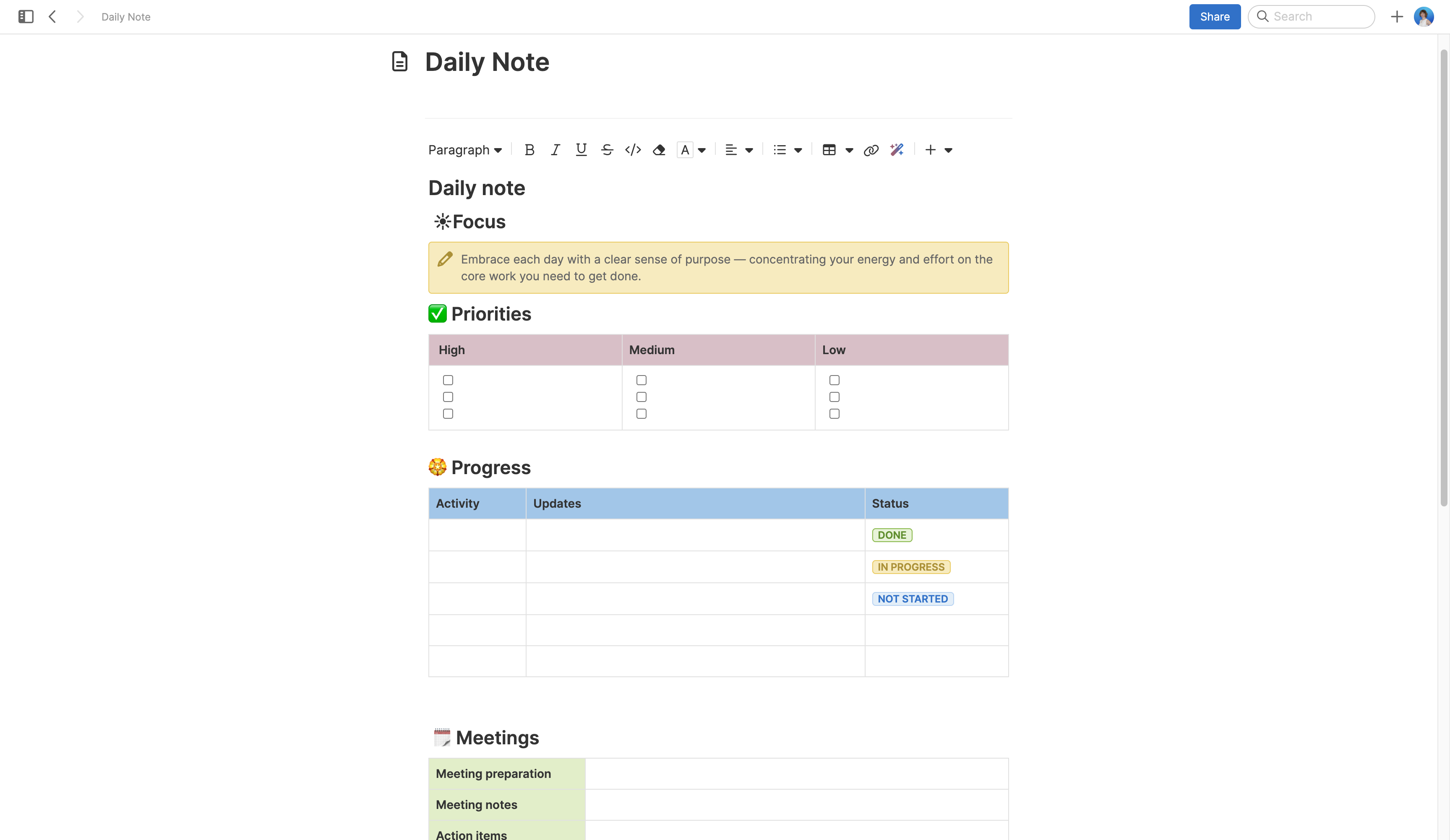
About the daily note template
Every day is a fresh start. Get into the habit of beginning yours with a daily note — a perfect spot to collect your thoughts, organize tasks, and prepare for meetings.
The template comes with built-in sections for varying types of work and an embedded whiteboard for creative ideation. Experiment with what works for you — the idea is to revisit the note throughout the day to track your progress and stay organized.
When you find a format you love, you will be hooked and get more done. And then you can repeat those steps over and over. (Every day!)
Best practices
Start your day ready to cruise through your tasks, meetings, and other activities.
Embrace purpose Jot down your focus areas for the day. This helps you concentrate your energy and effort on the most important things that you need to get done.
Set priority order Group tasks in order of importance and check them off as you go.
Keep meetings manageable Write down the topics you want to discuss during meetings — including any ideas, concerns, or recommendations you want to raise. Then, record meeting notes and capture any action items you need to follow up on.
Capture notes and sketches Document important information that you gather throughout the day. Use the whiteboard in the template as a free-form space to collect product ideas and think through raw concepts — so they are never lost or forgotten.
Reflect on your day Jot down lessons learned, challenges faced, and any feedback you received. This reflection helps with your professional growth — so you can identify patterns and make adjustments to achieve your best.